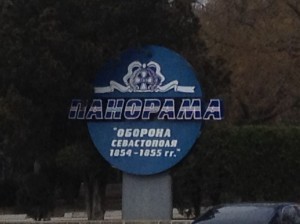Mentor Me: GA=T+E—Learning Modality and Learning Efficiency
As I wrote in Chapter V of Mentor Me:
“It is important to understand how you learn most effectively. People learn information in different ways based upon what we call their learning modality. Some people learn better visually while others learn better by listening (auditory), and still others learn better by tactile means, kinesthetic touch, and body movements.
We are all students of life, and we need to learn new things all the time. In addition, in order to fulfill your Greatest Achievement (GA), you may need to gain a certification, earn a degree, take some classes, or learn some new skill(s).
 If you learn visually, you will absorb new information best through seeing it in pictures, graphs, charts, diagrams; viewing illustrations with instructions; watching an instructor; and taking notes. In contrast, if you are an auditory learner, you will learn best through verbal lectures, discussions, and listening to what others have to say about the subject. You will cue in on variances such as the tone, voice, pitch, speed, and idiosyncrasies of someone’s speech to best remember and learn. Also, you will find reading and written information not as easy to remember as spoken words. Auditory people need to hear the written words so they can recall the information. For this reason, if you learn best by the auditory modality, you will benefit most by reading aloud or using a tape recorder for lectures and playing back the recordings.
If you learn visually, you will absorb new information best through seeing it in pictures, graphs, charts, diagrams; viewing illustrations with instructions; watching an instructor; and taking notes. In contrast, if you are an auditory learner, you will learn best through verbal lectures, discussions, and listening to what others have to say about the subject. You will cue in on variances such as the tone, voice, pitch, speed, and idiosyncrasies of someone’s speech to best remember and learn. Also, you will find reading and written information not as easy to remember as spoken words. Auditory people need to hear the written words so they can recall the information. For this reason, if you learn best by the auditory modality, you will benefit most by reading aloud or using a tape recorder for lectures and playing back the recordings.
In contrast, if you are a kinesthetic learner, which is the rarest (I have seen statistics that state they represent about 5 percent of the population), you will learn best by doing physical activities with your body, such as dance, or by touching objects.
 The best illustration of this, I have found, can be seen in how people learn a new language. Ask yourself, how is the best way for you to learn a new language? Do you learn best by looking at the words and writing, listening and speaking, or by doing an activity associated with the motions that describe the word?”
The best illustration of this, I have found, can be seen in how people learn a new language. Ask yourself, how is the best way for you to learn a new language? Do you learn best by looking at the words and writing, listening and speaking, or by doing an activity associated with the motions that describe the word?”
If you do not know Russian, look at the sign in the photo on the left: what do you think it says? Reading it with our familiar English alphabet (Latin alphabet) and not in the Russian, Cyrillic alphabet, most people read it as, “Nah O Pama.” What this really says in Russian, is a word that is familiar in the English vocabulary, “Panorama.” What makes it extra difficult to learn Russian having known English, is (as you can see from this example) many of the letters in their alphabet are the same as the English letter, but with a completely different sound of another letter we may be familiar with in English.
 This photo was taken by me, during one of my trips to Sevastopol, Ukraine (now part of Russia per the recent Russian action in the Crimea – Sevastopol is the city where Russia’s Black Sea Fleet is stationed). “Panorama” refers to a rounded building in Sevastopol, where there are models of the three wars Sevastopol has been through in their past (photo on the left of the Panorama Museum).
This photo was taken by me, during one of my trips to Sevastopol, Ukraine (now part of Russia per the recent Russian action in the Crimea – Sevastopol is the city where Russia’s Black Sea Fleet is stationed). “Panorama” refers to a rounded building in Sevastopol, where there are models of the three wars Sevastopol has been through in their past (photo on the left of the Panorama Museum).
How is the Best Way for You to Learn a New Language?
I came up with this thought after thinking about my own experiences with learning, specifically, my previous travels to the Ukaine, and my inability to absorb the Russian language just from listening (auditory learning modality) – in contrast to how I learned French in high school (visual learning modality), I had a much easier time absorbing French, because I could visualize the letters, since French uses our same English alphabet, and therefore I could see the words, letters, or at least visualize the words when they were spoken to me.
 Russian, in contrast, I had no way to visualize the new sounds, letters, or how a word even might appear, since I do not know the Cyrillic alphabet. I thought, this is the best way to describe to someone the difference in learning modalities, since most people learn a new language at some point in their studies in school; most people can relate to the experience of trying to learn a new foreign language. For example, after five trips to the Ukraine, I finally started to visualize some words in Russian and figure out some words, but I could only do this by visualizing the words and letters, since my learning modality is visual. For example, the sign in this photo above – I figured out this says aquarium (because one of my friends told me there was an aquarium in the city center of Sevastopol and I had walked by this building probably over two dozen times in my two visits – I finally figured out this sign says aquarium).
Russian, in contrast, I had no way to visualize the new sounds, letters, or how a word even might appear, since I do not know the Cyrillic alphabet. I thought, this is the best way to describe to someone the difference in learning modalities, since most people learn a new language at some point in their studies in school; most people can relate to the experience of trying to learn a new foreign language. For example, after five trips to the Ukraine, I finally started to visualize some words in Russian and figure out some words, but I could only do this by visualizing the words and letters, since my learning modality is visual. For example, the sign in this photo above – I figured out this says aquarium (because one of my friends told me there was an aquarium in the city center of Sevastopol and I had walked by this building probably over two dozen times in my two visits – I finally figured out this sign says aquarium).
Russian Words I Learned Since Now I can visualize some Russian Words
It is funny to me – so much of Russian, not knowing the Cyrillic alphabet, looks almost like hieroglyphics to me. I joke with my Ukrainian friends that the number “3″ is one of the letters of their alphabet.  It is true, look at the next word:
It is true, look at the next word:
Запорожье (sounds like Zjap ohro zjia)
 This is the name of one of their cities in the Ukraine – Zaporozhye (the photo on the left is one of the churches in Kiev). Now after visiting the Ukraine so many times, I understand the letter “3″ has more of a “Z” sound (more like a “Zj”, as their language has many sounds we do not have in English). Ukrainians laugh and have told me us Westerners have lazy mouths and lazy ears; Russian has many different sounds formed in different areas of the mouth that “us Westerners” are just not accustomed to hearing or reproducing.
This is the name of one of their cities in the Ukraine – Zaporozhye (the photo on the left is one of the churches in Kiev). Now after visiting the Ukraine so many times, I understand the letter “3″ has more of a “Z” sound (more like a “Zj”, as their language has many sounds we do not have in English). Ukrainians laugh and have told me us Westerners have lazy mouths and lazy ears; Russian has many different sounds formed in different areas of the mouth that “us Westerners” are just not accustomed to hearing or reproducing.
Below are some of the most important words I know in Russian: (I always want to be polite, especially when I travel, and as I wrote in Mentor Me, some things – like coffee – are very important to me.) 
спасибо (sounds like “spi see bo”) – this means “thank you”
привет (sounds like “piv iet”) – this is the familiar way of saying “Hi”
пожалуйста (sounds like “puh jow oostaha”) – this means “please”
кафе американо (sounds like “cafe Americano”) – this means coffee, if you just say “cafe” you will receive espresso
до свидания (sounds like “dos vidaniya”) – this means “goodbye”
покa (sounds like “po kah”) – this is the more familiar way of saying “bye”
So when you think of what is the best way you learn a new foreign language – you will know your learning modality and how to focus your study time in order to maximize efficiency for any new material, in any subject, you may learn.
In Mentor Me, I present a trial and error process/approach I discovered to help me learn information most efficiently with high retention. It served me well throughout high school, my university/graduate school studies, and for all the licensing exams I needed to pass for my professional licenses. See Mentor Me for that process/approach.
Kinesthetic learning modality is very rare, but regardless of how you learn – the more stimuli you use – sound, sight, touch, motion, etc… – the more you combine stimuli and incorporate the maximum number of stimuli into your learning time, the easier it will be for you to learn and retain new material.
If you have not done so already…pick up your copy of Mentor Me today!
Click Below, Enter Your Information, and Buy Mentor Me:
Warmly,
Ken Poirot
Financial Professional and Scientist of Life





